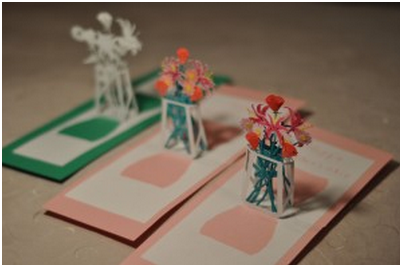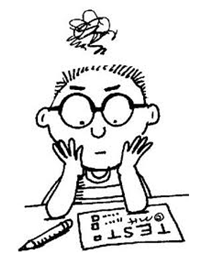
I’ve always wondered how some kids become so good at math, well, really anything, at such early ages. Think Tiger Woods at golf, Bobby Fischer or Josh Waitzkin at chess, Terence Tao at math. My theory is that you get them started early, and you get them going in a way that makes it fun for them so that they will like what they are doing and continue doing it even when the parent isn’t there driving them on. So with that in mind, take a look at this article from canada.com that talks about teaching math to babies – or more precisely, how to begin the process such that they get a good “number sense” so that when they get to school, they already have a good feeling for the “mathiness” of the world.
In a nutshell, what the article proposes is that a child’s number sense is established by the time they get to kindergarten and sets them on a trajectory that can determine how well they do in math when they’re in the fifth grade. I don’t know if I buy this completely, but I’m all for doing whatever you can to help them along.
There are some theoretical concepts that would be useful to understand in how a child learns numbers, such as math talk and (according to the article) the five numerical conceptual processes that a child goes through to gain that number sense. I quote:
“- Stable order. The child learns number words have an order. For example 1, 2, 3 is correct. 1, 2, 4 is not.
– One-to-one correspondence. The child learns each number can only correspond to one object in a set of things counted. For example, when counting, each truck has its own number: the child can’t skip a truck or count the same truck twice.
– Cardinality. The child learns the last number used when counting a set of things is the number of things in that set. For example, when counting 4 trucks, when they label the last truck as number 4 that is how many trucks there are in the set.
– Abstraction. The child learns anything can be counted, even things that are not the same. For example, 2 trucks and 2 cars is 4 things in the set of things counted.
– Order irrelevance. The child learns that things can be counted in any order. For example, a set of trucks can be arranged in a circle and then in a line and there will still be the same number.”
And in keeping with the spirit of what I was talking about earlier – that is, motivate and inspire your babies by making these learning exercises fun, the article also has some very interesting suggestions for what you can do. Again, I quote:
“- Encourage your child to the list off numbers 1 to 10 in the right order. While not necessarily counting, it helps them become familiar with number sequence.
– Count objects that are in front of the child and label the set size: “Let’s count your dolls. 1, 2, 3, 4. You have 4 dolls.” Point at each object as it is counted and encourage the child to do the same. Counting something is better than just counting.
– Vary what you count: count objects, but also steps, stairs, and sounds.
– Numbers can also be talked about in the context of reading stories to young children. There are often objects in pictures that can be counted and then the set size should be labeled. After counting something, labeling at the end is just saying “so there are 3 bears”
– Line up two sets of things: 3 trucks and 2 cars. Then count each set while pointing to each member of the corresponding pair: “1” (point to a car and a truck that are side by side); “2” (point to a car and a truck that are side by side); “there are 2 cars”; and “3” (pointing to the one extra truck that is not paired with a car); “there are 3 trucks. There are 2 cars and 3 trucks.” This helps kids learn one-to-one correspondence.
– Parents should find contexts in their daily routines when they can talk about numbers with their children. For example, “tonight there will be five people at home, so we need to put five plates on the table. Let’s count them: 1-2-3-4-5. We have 5 plates.” This lets kids know people do math all the time.
– When you are walking in the neighborhood, count the number of red cars you see, “1 red car, 2 red cars, 3 red cars — today we saw 3 red cars.” This helps give kids a clue to the fact that things can be categorized, and therefore counted, in different ways.
– Counting can come up when you need to share. “We have 4 cookies and 2 children — let’s give 1 to you, and 1 to your friend, another 1 to you and another 1 to your friend. Let’s count how many each of you have — 1, 2 — you have 2. 1, 2 — you have 2. Each of you has 2 cookies!” This gives kids a clue to the fact that the same items can be counted in different ways.
– Introduce basic calculation. “You have 2 trucks. If I give you 1 more, you will have…?” (Wait for child to answer, or supply an answer if the child doesn’t know: “Now you have 3 trucks.”) Subtraction: “You have 3 trucks — if you give one to me you will have…?” (wait or supply an answer).”
All excellent ideas, I say. Now Nathan is just getting to that age where he can recognize when we are talking to him and he’s now responding back. I don’t know if he’s going to understand “2 cars and 3 trucks” yet, but I’m certainly going to give this a shot as soon as possible.



